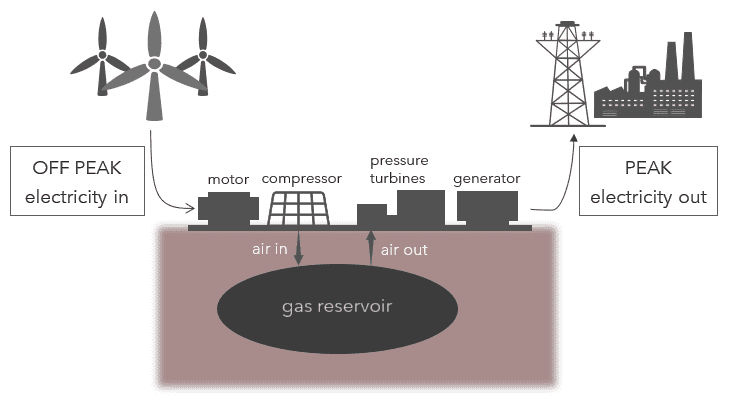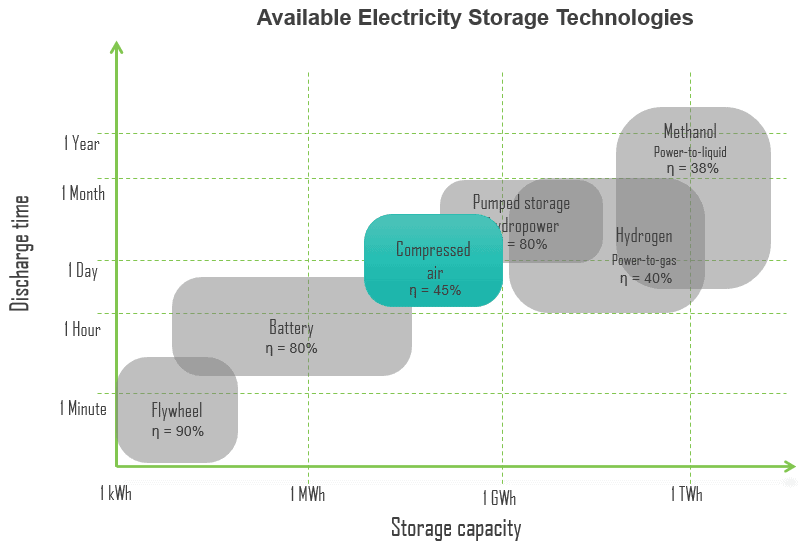In compressed air energy storage (CAES), surplus energy is used to compress air for subsequent electricity generation. In CAES facilities, the air is compressed and stored under high pressure in underground caverns. CAES is an alternative to pumped hydro since it has relatively high power output and storage capacity. However, with CAES, atmospheric air is compressed and stored in underground facilities under high pressure instead of pumping water to an upper reservoir when the electricity supply is high. When the demand for electricity is high, the stored air is heated (by heat recuperation or natural gas), expanded, and led through a turbine driving a generator, which is used for electricity production.

Compressed-air energy storage plants can take in the surplus energy output of renewable energy sources during times of energy over-production. This stored energy can be used later when demand for electricity increases or energy resource availability decreases. Compressing and decompressing air introduces energy losses, resulting in only 40-50% electric-to-electric efficiency. Compression of air creates heat; the air is warmer after compression. Expansion requires heat, and the air will be much colder after expansion if no extra heat is added. If the heat generated during compression can be stored and used during expansion, efficiency improves considerably.
